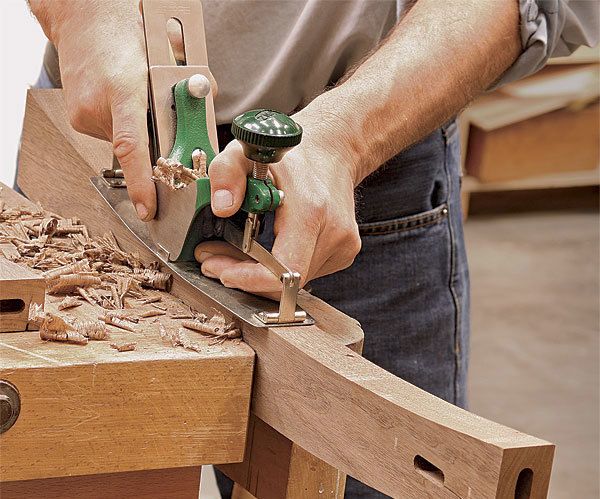Why You Need a Compass Plane
Create smooth curves that are fair to the eye and hand
Synopsis: Long used by shipwrights, carriage builders, and furniture makers, compass planes are still unchallenged when it comes to smoothing long, sweeping curves. They have more mass and momentum than a spokeshave and are faster than sanding. Paul Schurch explains where to buy one and which one to buy, how to tune it up when you bring it home, and how to use it for best results.
Compass planes, also called circular planes, have a rich history but are strangely overlooked by modern woodworkers. In the past, they were used by shipwrights, carriage builders, and furniture makers. Today, for sweeping curves, the plane is still unchallenged. It beats a spokeshave on wide stock because it has more mass and momentum, with a long, adjustable sole that creates smoother curves, free of flat spots and kinks. And it’s faster than the contoured and flexible sanding blocks that I’ve used in the past. I use this plane for all sorts of furniture parts, as well as for router templates.
I grab my old Stanley compass plane for both regular curves with a uniform arc and organic curves with an everchanging radius, called “fair curves,” using the adjustment knob to alter the curve of the sole on the fly. Since almost all of my furniture has curved components, almost every project is touched by a compass plane.
I use the tool on solid wood, plywood, and MdF. I use it to smooth the bandsawn curves on router templates, and then I use it again on actual workpieces, to remove the machine marks. Although the tool handles concave and convex curves with equal aplomb, there is a limit to how tight a curve it can handle. However, my favorite curves are long and graceful, and the compass plane handles them beautifully. For tips on designing and using fair, organic curves, see my article, “drawing Big Curves,” in FWW #175.
Where to get one, and which one to get
The first adjustable-sole compass plane was designed by leonard Bailey in 1871. This Stanley No. 13 was a crude affair and went through many design changes, reaching its pinnacle as the Stanley No. 113 Circular Plane. The adjustment of the front and rear sole occurs in unison with a single adjustment knob, bending the spring-steel sole into a convex or concave curve. I find myself constantly micro-adjusting the curve when using a compass plane, and the front-knob adjustment on the No. 113 style works better for me than other systems.
From Fine Woodworking #227
For the full article, download the PDF below:
Fine Woodworking Recommended Products

Starrett 12-in. combination square

Veritas Micro-Adjust Wheel Marking Gauge

Tite-Mark Marking Gauge























Log in or create an account to post a comment.
Sign up Log in